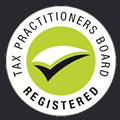Thinking about easing into retirement but still need a steady income? Want to trim your tax bill while growing your super? Or maybe you’d love to knock down some debt before you stop working? If you are 60 or over, you can do just that.
Who can start a super pension?
Using your super to start a pension can help give you the cashflow needed to reach your financial goals. Not everyone is allowed to start a pension but if you are 60 or over, you can. Once you retire or turn age 65 you can unlock the flexibility an account-based pension has to offer. This includes no maximum limit on how much you can take out – so long as you draw a minimum pension.
If you’re between 60 and 65 and still working, you may not qualify for a fully flexible account-based pension. However, you can start a Transition to Retirement (TTR) pension instead. While a TTR pension has some limits—like a maximum annual withdrawal of 10% of your starting balance —it can still be a powerful tool to help you achieve your financial goals. If you’re looking to supplement your income, reduce tax, or boost your super, a TTR pension could be the solution you need!
Continue reading “Three great reasons to start a Transition to Retirement Pension”




